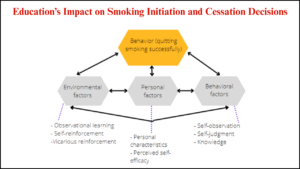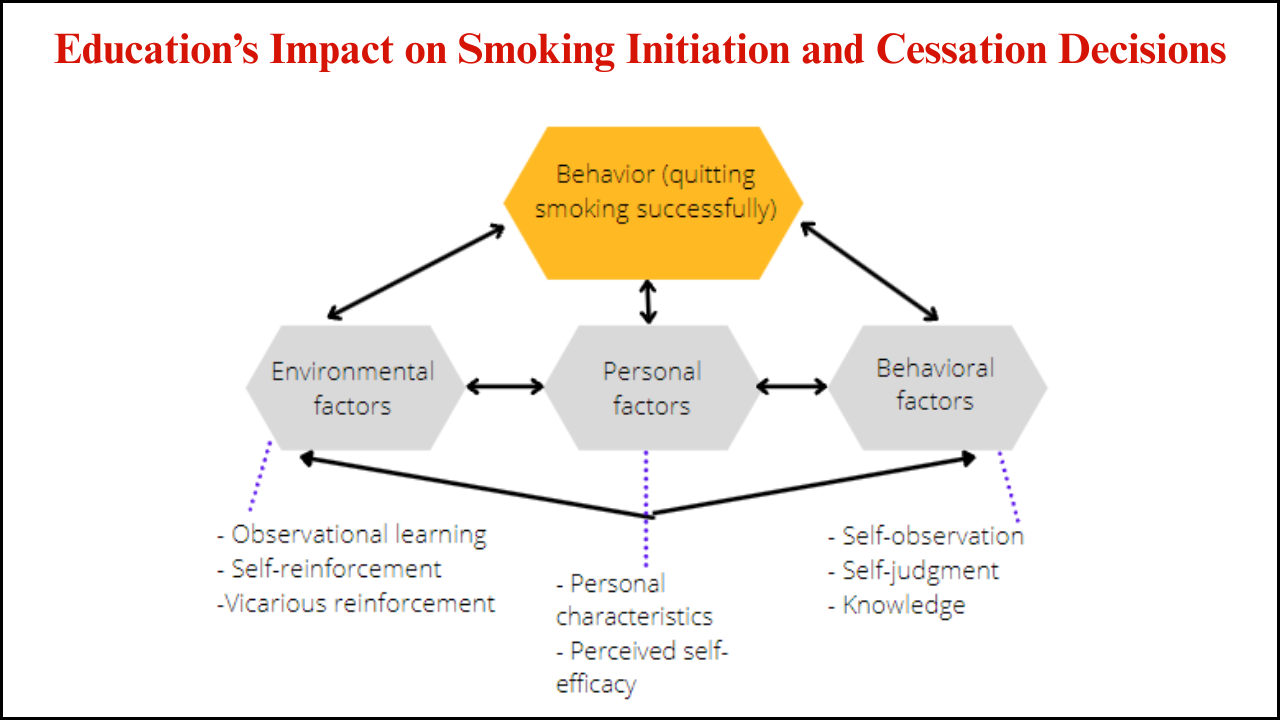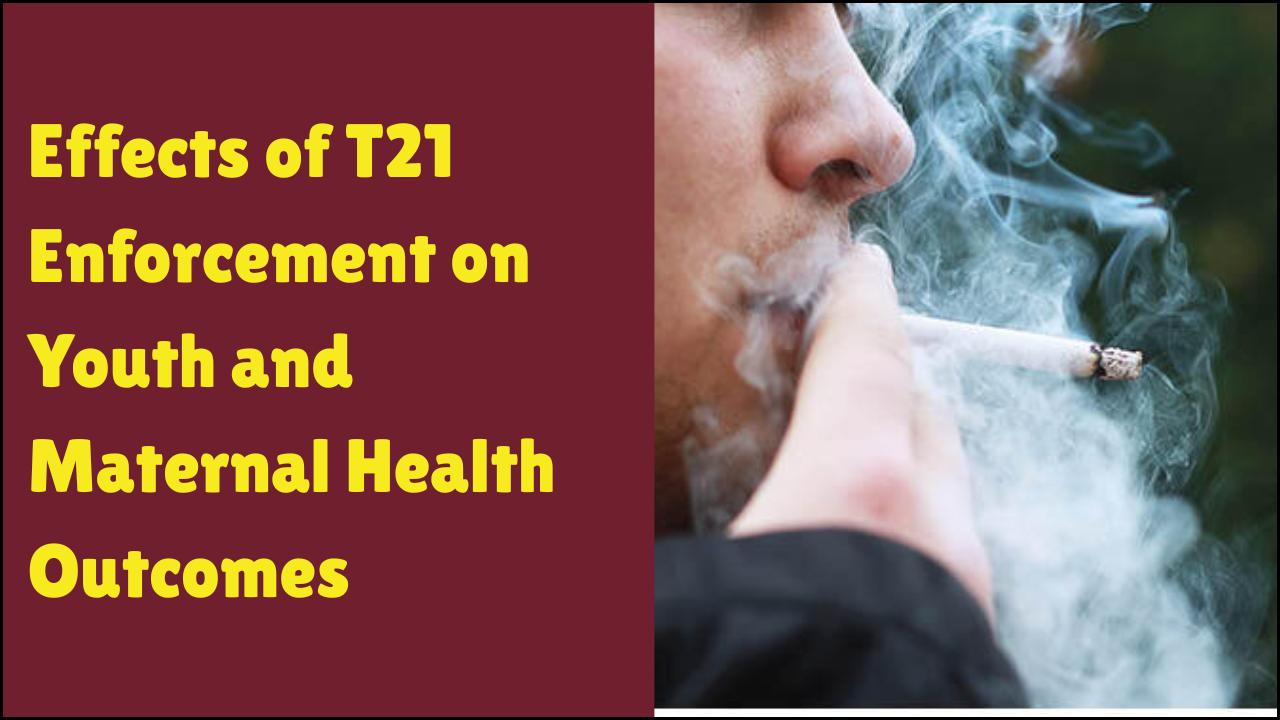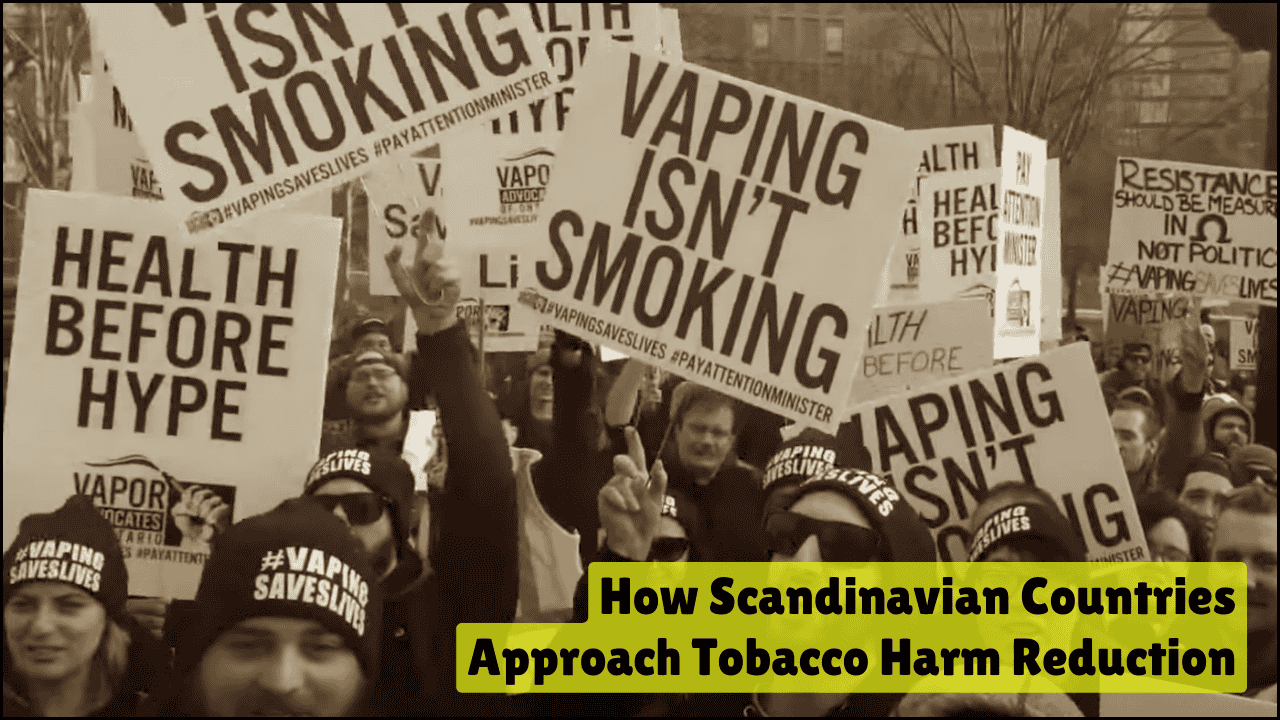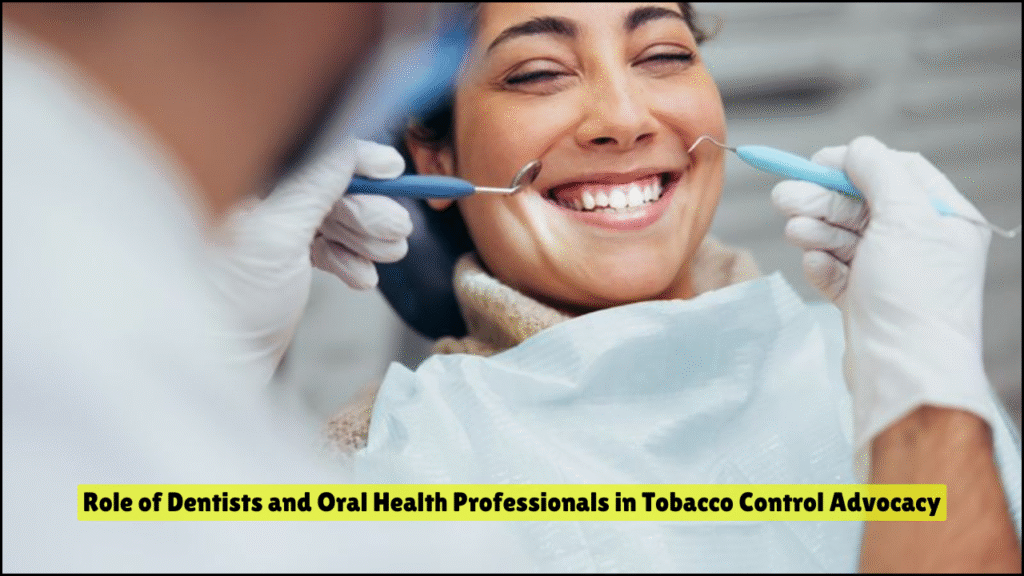
Dentistry holds a significant place in public health because oral health professionals often encounter the first visible effects of tobacco use. Tobacco consumption, whether smoked or smokeless, leaves strong and early warning signs inside the oral cavity. Dentists and allied oral health practitioners, therefore, not only treat oral complications but also play a vital role in prevention, counseling, and advocacy against tobacco. Understanding this role shows how oral health care providers contribute to the larger goal of reducing tobacco-related morbidity and mortality.
Table of Contents
Importance of Dentists in Tobacco Control
- Dentists regularly examine patients’ mouths, making them among the first to detect precancerous or cancerous lesions.
- Oral health professionals maintain trusted, long-term relationships with patients, which helps in effective counseling.
- Regular dental check-ups provide recurring opportunities to intervene against tobacco use.
- Dentists can combine clinical care with public health advocacy to broaden awareness.
Key Responsibilities of Oral Health Professionals
- Early Detection
Dentists identify leukoplakia, erythroplakia, gum diseases, and oral cancers that commonly arise from tobacco. - Counseling and Education
Oral health professionals guide patients about the harmful effects and provide cessation advice. - Referral and Support
Professionals link patients with specialized tobacco cessation services and helplines. - Policy Engagement
Dentists participate in campaigns, workshops, and advocacy meetings with policymakers. - Community Awareness
Dental camps and outreach activities spread anti-tobacco messages at the grassroots level.
Strategies Used by Dentists in Tobacco Control
- Brief Interventions
Short, structured advice sessions during appointments motivate patients to quit. - Motivational Interviewing
Dentists use behavior-change communication techniques tailored to patients’ readiness to quit. - Nicotine Replacement Therapy (NRT) Guidance
Dentists inform patients about options like gums, patches, or lozenges to reduce withdrawal symptoms. - Educational Materials
Posters, leaflets, and digital visuals in clinics reinforce anti-tobacco messaging. - School and College Programs
Oral health professionals conduct awareness sessions for youth to prevent initiation.
Challenges Faced by Dentists in Tobacco Advocacy
- Time Constraints – Limited consultation time often reduces the scope for extended counseling.
- Lack of Training – Many dentists lack formal training in cessation techniques.
- Patient Resistance – Patients addicted to tobacco often show denial or reluctance to quit.
- Resource Limitations – Availability of cessation aids or referral centers may be scarce in some regions.
- Policy Gaps – In some areas, dental associations are not fully integrated into tobacco control frameworks.
Role of Oral Health Professionals in Public Health Campaigns
- Organizing mass awareness drives against tobacco in collaboration with NGOs.
- Engaging in media advocacy through television, radio, or print to highlight the oral consequences of tobacco.
- Participating in policy discussions to enforce stricter tobacco laws.
- Working with schools and community centers to deliver preventive education.
- Publishing research studies on the oral health impacts of tobacco for academic and policy use.
Roles of Oral Health Professionals in Tobacco Control
| Role | Description | Impact on Tobacco Control |
|---|---|---|
| Clinical Detection | Identification of early oral lesions caused by tobacco | Helps in timely intervention and reduces cancer risk |
| Patient Counseling | Personalized advice and motivation to quit tobacco | Improves cessation rates among patients |
| Community Engagement | Awareness programs in schools, workplaces, and villages | Prevents tobacco initiation among youth |
| Policy Advocacy | Participation in campaigns and lobbying | Strengthens public health legislation |
| Research Contribution | Publishing data on oral health and tobacco | Informs policymakers and medical professionals |
Challenges Faced by Dentists in Advocacy
| Challenge | Explanation | Possible Solution |
|---|---|---|
| Time Limitation | Dental consultations are short, reducing the scope for counseling | Introduce quick counseling protocols |
| Insufficient Training | Lack of formal cessation counseling education | Integrate tobacco control modules in the dental curriculum |
| Patient Reluctance | Patients often deny or resist advice to quit | Use motivational interviewing techniques |
| Resource Gaps | Lack of access to cessation aids in clinics | Provide subsidies and make aid widely available |
| Weak Policy Support | Limited involvement of dental bodies in policymaking | Strengthen collaboration between the government and the dental associations |
Impact of Dentists in Reducing Tobacco Burden
- Oral health professionals act as frontline advocates in the battle against tobacco.
- Early detection of lesions saves lives through timely referral and treatment.
- Continuous awareness drives prevent younger generations from adopting tobacco habits.
- Integration of dentists into national health programs enhances the success of anti-tobacco policies.
- Patient trust in dentists makes their advice more effective compared to general awareness campaigns.
Innovative Approaches in Tobacco Control by Dentists
- Digital Platforms – Using tele-dentistry and social media for spreading awareness.
- Integration with General Healthcare – Coordinating with physicians for holistic cessation programs.
- Behavioral Apps – Encouraging patients to use mobile apps that track quitting progress.
- Community Role Models – Encouraging former users to share experiences during dental health camps.
- Dental Curriculum Expansion – Including tobacco cessation as a core subject in training.
Innovative Methods Adopted by Dentists
| Method | Description | Advantage |
|---|---|---|
| Tele-Dentistry | Online consultation and counseling for tobacco users | Expands reach to remote populations |
| Mobile Apps | Apps that provide reminders, progress tracking, and motivation | Improves adherence to quitting |
| Collaborative Care | Dentists and physicians jointly manage patients | Provides comprehensive health support |
| Role Model Campaigns | Involving ex-tobacco users in awareness sessions | Enhances relatability and impact |
| Curriculum Enhancement | Inclusion of cessation training in dental education | Produces future-ready oral health professionals |
Global Perspective on Dentists in Tobacco Advocacy
- In countries like the USA, UK, and Canada, dentists are actively integrated into national cessation programs.
- The World Health Organization emphasizes dental professionals as key contributors to the Framework Convention on Tobacco Control (FCTC).
- Developing nations increasingly recognize dentists as valuable public health advocates in combating rising tobacco-related diseases.
- Cross-country collaborations help in sharing best practices and innovative intervention strategies.
Future Directions for Oral Health Professionals in Advocacy
- Development of standardized tobacco cessation guidelines for dental practitioners.
- Inclusion of structured training in undergraduate and postgraduate dental education.
- Establishment of dedicated dental-based tobacco cessation clinics.
- Stronger collaboration with government health agencies for advocacy campaigns.
- Expansion of digital platforms to maximize outreach and patient engagement.
In Summary
Dentists and oral health professionals hold a unique position in tobacco control advocacy because they directly witness the harmful effects of tobacco inside the oral cavity. Their contribution extends beyond treatment into prevention, counseling, community engagement, and policy support. The integration of oral health professionals into public health strategies not only improves patient outcomes but also strengthens the fight against the global tobacco epidemic. A future where dentists are fully empowered and trained in tobacco control will result in healthier communities and reduced burden of tobacco-related diseases.

